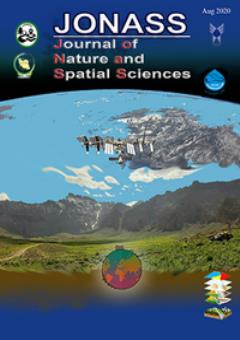Investigating the Spatial and Temporal Variation of NO2 Pollutant Obtained from Sentinel 5P Satellite in Cities of Yazd Province-Iran
الموضوعات :
Samaneh Mozaffari
1
,
Sadegh Mokhtarisabet
2
![]()
1 - Department of Environment,, Yazd Branch, Islamic Azad University, Yazd, Iran
2 - Islamic Azad University, Yazd, Iran
الکلمات المفتاحية: Air Pollution Nitrogen Dioxide (NO2) Remote Sensing Sentinel-5P Yazd Province,
ملخص المقالة :
Background and objective: Nitrogen dioxide (NO2) is a significant air pollutant prevalent in industrialized and densely populated regions, including Yazd province. This study aims to assess the temporal and spatial variations in NO2 concentrations in Yazd and its surrounding areas. Materials and methods: Utilizing the advanced remote sensing capabilities of the Sentinel-5P satellite, we compiled monthly and seasonal distribution maps of NO2 concentrations for Yazd province over a one-year period, spanning from April 1401 to March 1402. The Google Earth Engine (GEE) platform facilitated the processing and visualization of satellite data. Additionally, the influence of wind patterns and precipitation on the dispersion and concentration of NO2 was systematically investigated. Results and conclusion: The findings revealed that the highest concentrations of NO2 occurred in spring, particularly in Yazd, while the lowest levels were recorded in winter, specifically in Bahabad city. It was observed that wind speed and direction had a limited impact on the distribution of NO2 across the province. In contrast, rainfall demonstrated a significant relationship with NO2 concentrations; increased rainfall correlated with reduced pollutant levels. Overall, the study highlights the necessity for continuous monitoring of air quality and the implications of meteorological factors on pollutant dispersion in Yazd province.
Abbaszadeh Tehrani, N., Farhanj, F., & Janalipour, M. (2022). Investigating effect of COVID-19 on NO2 density using remote sensing products (case study: Tehran province). Spatial Information Research, 30(4), 513-525.
Amani, M., Ghorbanian, A., Ahmadi, S. A., Kakooei, M., Moghimi, A., Mirmazloumi, S. M., ... & Brisco, B. (2020). Google earth engine cloud computing platform for remote sensing big data applications: A comprehensive review. IEEE Journal of Selected Topics in Applied Earth Observations and Remote Sensing, 13, 5326-5350. doi: 10.1109/JSTARS.2020.3021052
Beig, G., Sahu, S. K., Rathod, A., Tikle, S., Singh, V., & Sandeepan, B. S. (2021). Role of meteorological regime in mitigating biomass induced extreme air pollution events. Urban Climate, 35, 100756. https://doi.org/10.1016/j.uclim.2020.100756
Bitta, J., Pavlíková, I., Svozilík, V., & Jančík, P. (2018). Air pollution dispersion modelling using spatial analyses. ISPRS International Journal of Geo-Information, 7(12), 489. https://doi.org/10.3390/ijgi7120489
Edo, G. I., Itoje-akpokiniovo, L. O., Obasohan, P., Ikpekoro, V. O., Samuel, P. O., Jikah, A. N., ... & Agbo, J. J. (2024). Impact of environmental pollution from human activities on water, air quality and climate change. Ecological Frontiers. https://doi.org/10.1016/j.ecofro.2024.02.014
Gharibvand, L. K., Jamali, A. A., & Amiri, F. (2023). Changes in NO2 and O3 levels due to the pandemic lockdown in the industrial cities of Tehran and Arak, Iran using Sentinel 5P images, Google Earth Engine (GEE) and statistical analysis. Stochastic Environmental Research and Risk Assessment, 37(5), 2023-2034. https://doi.org/10.1007/s00477-022-02362-4
Gorelick, N., Hancher, M., Dixon, M., Ilyushchenko, S., Thau, D., & Moore, R. (2017). Google Earth Engine: Planetary-scale geospatial analysis for everyone. Remote sensing of Environment, 202, 18-27. https://doi.org/10.1016/j.rse.2017.06.031
Goudie, A. S. (2018). Human impact on the natural environment. John Wiley & Sons.
Jumaah, H. J., Ameen, M. H., Mahmood, S., & Jumaah, S. J. (2023). Study of air contamination in Iraq using remotely sensed Data and GIS. Geocarto International, 38(1), 2178518. https://doi.org/10.1080/10106049.2023.2178518
Kiani, A., & Ghafarian, H. (2022). Investigating the spatial and temporal variations of SO2 pollutant obtained from the Sentinel-5 satellite in Yazd Province.
Manisalidis, I., Stavropoulou, E., Stavropoulos, A., & Bezirtzoglou, E. (2020). Environmental and health impacts of air pollution: a review. Frontiers in public health, 8, 14.
Rangzan, K., Kabelizadeh, M., & Mohammadi, Sh. (2020). Investigating the spatial-temporal distribution of nitrogen dioxide pollution in Khuzestan Province using TROPOMI sensor. Journal of Health System Research.
Shami, S., Khosh Lahjeh, A., Ghorbani, Z., Moghimi, A., & Mohammadzadeh, A. (2020). Investigating the changes in air pollutants during the COVID-19 outbreak in Iran using Sentinel-5 satellite data. Journal of Surveying Science and Technologies.
Shamshiri, S., Jafari, R., Soltani, S., & Ramazani, N. (2014). Identification and zonation of dust storms in Kermanshah Province by using MODIS images. Applied Ecology, 3, 29-41. (In Farsi).
Sillmann, J., Aunan, K., Emberson, L., Büker, P., Van Oort, B., O’Neill, C., ... & Brisebois, A. (2021). Combined impacts of climate and air pollution on human health and agricultural productivity. Environmental Research Letters, 16(9), 093004. DOI 10.1088/1748-9326/ac1df8
World Health Organization. (2000). Air quality guidelines for Europe. World Health Organization. Regional Office for Europe.
Zhang, X., Han, L., Wei, H., Tan, X., Zhou, W., Li, W., & Qian, Y. (2022). Linking urbanization and air quality together: A review and a perspective on the future sustainable urban development. Journal of Cleaner Production, 346, 130988. https://doi.org/10.1016/j.jclepro.2022.130988


